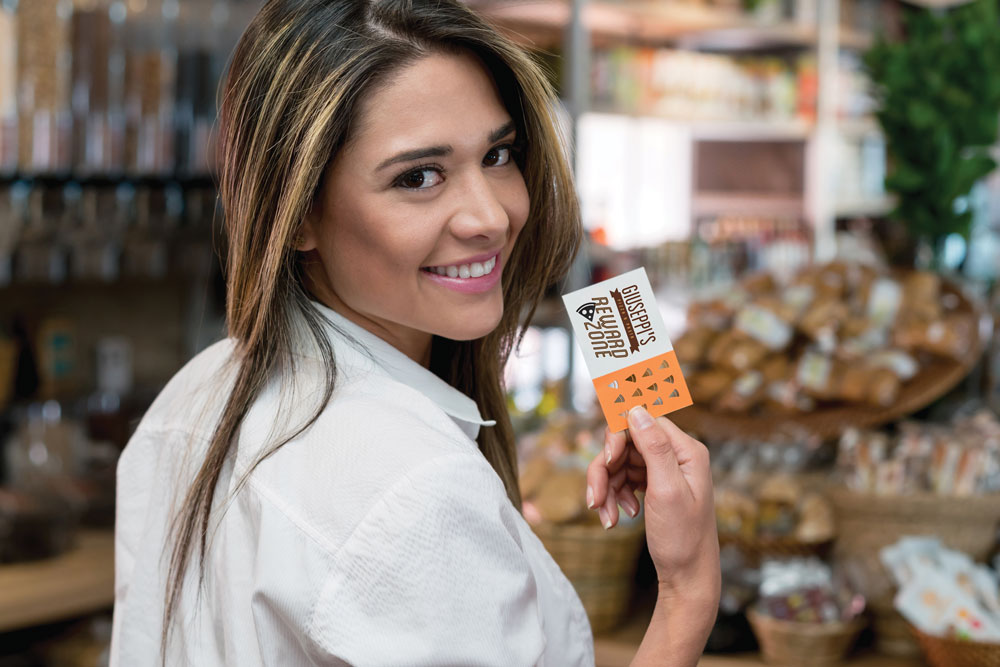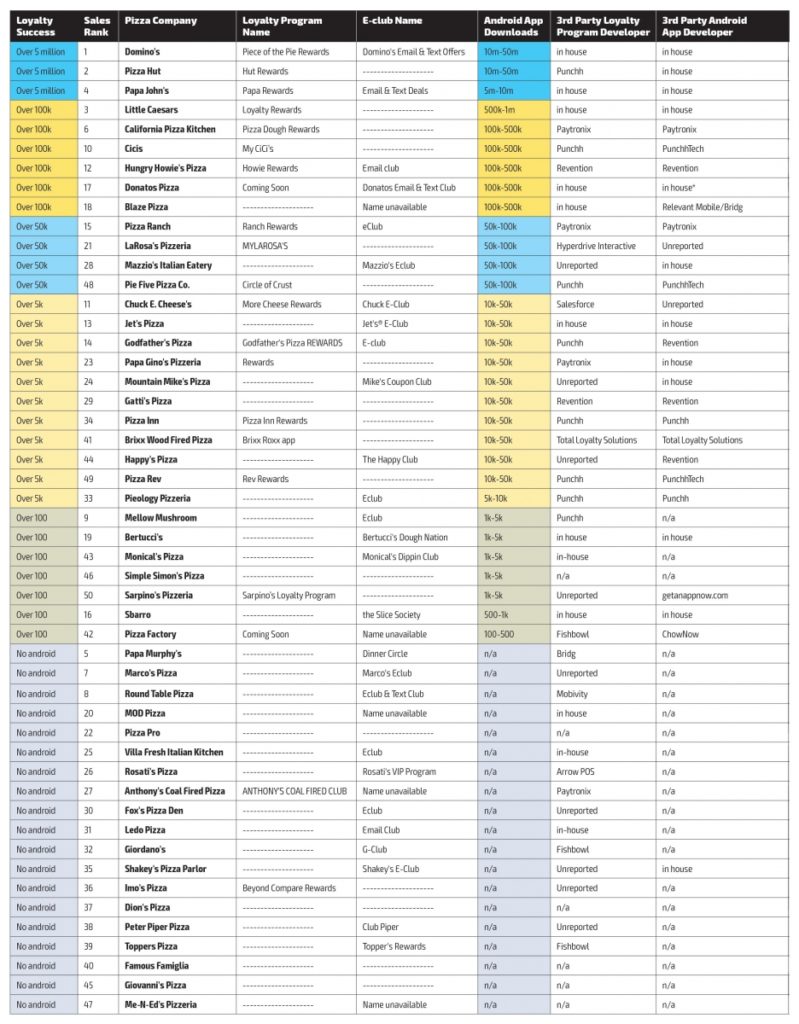Domino’s CEO Patrick Doyle (leaving his post in June) has touted Domino’s Piece of the Pie loyalty rewards program numerous times on company earnings calls, noting how the program has been a significant driver in the company’s growth since its 2015 introduction. There’s no denying that loyalty programs work in the case of Domino’s and other large restaurant chains such as Panera and Starbucks. In fact, most of the Top 50 pizza chains have some type of loyalty or reward program in place (see chart below).
With so many restaurants to choose from, membership in a loyalty program can help ease the decision-making process for some consumers. In a 2016 Forrester Data Consumer Technographics North American Retail and Travel Survey, 60% of loyalty customers said the programs influence where they make purchases, and 48% said loyalty programs influence what they buy.
In the same Forrester survey, nearly two-thirds (64%) of U.S. online adults who belong to any customer loyalty program, and who regularly participate in most of the programs they join, said the programs make them feel more loyal to the brand or company, compared with 42% who participate in just a few programs and 19% who rarely participate.
So now you may be starting to better understand why the big pizza chains got ahead of independents years ago and have stayed ahead. Copious research shows that today’s consumer craves a more personalized marketing experience, which includes messages and marketing sent through loyalty programs, and many top chains are meeting that need.
Fortunately, you don’t have to be part of a pizza chain to start a loyalty program of your own.
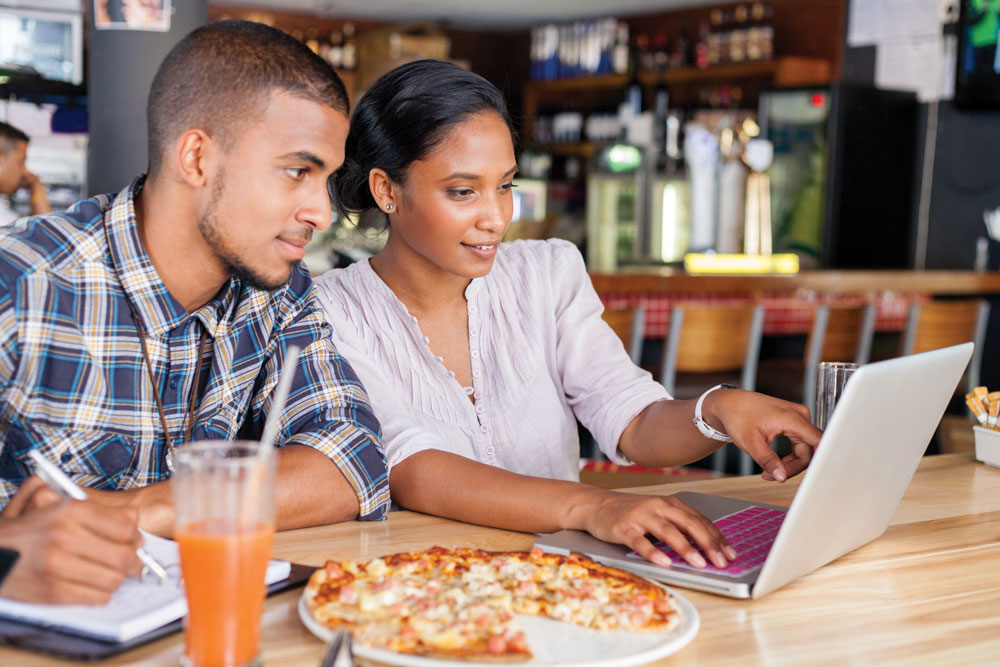 |
|
Customer experience is the name of the game, with satisfied customers much more likely to come back and to engage on social media via reviews and sharing. |
A Case for Loyalty
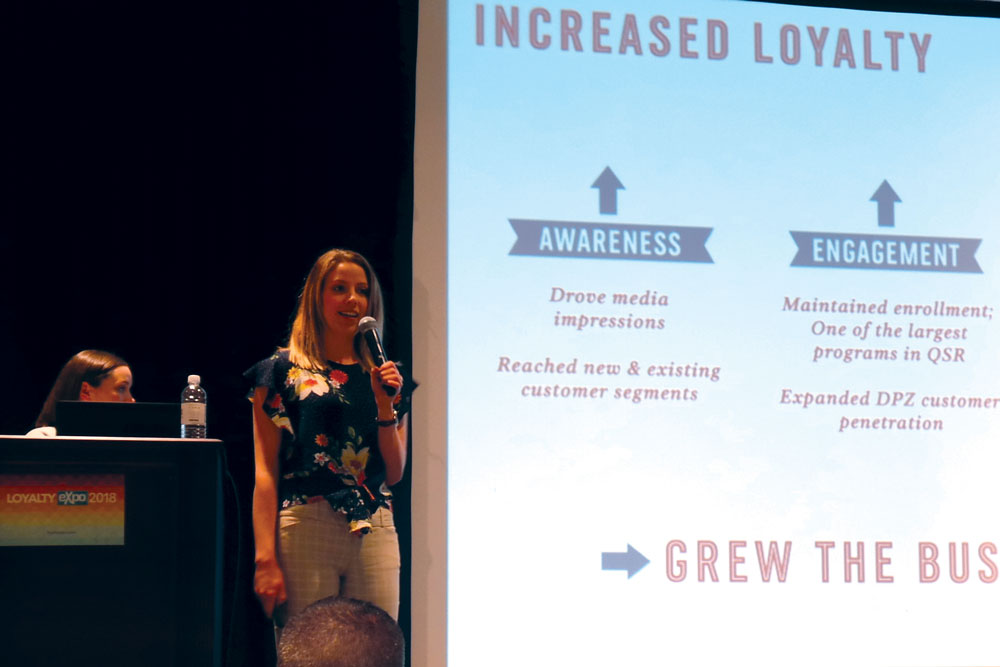
A Piece of the Loyalty Pie |
| By Rick Hynum
You don’t get to be the largest pizza company on the planet by taking your customers for granted. Domino’s loyalty program, called Piece of the Pie Rewards, has been a key growth driver, according to executives speaking at Loyalty Expo 2018 in Orlando. Domino’s launched the program—which covered online orders exclusively—in 2015, and its membership now reportedly numbers in the millions. But even as the delivery chain was overtaking longtime industry leader Pizza Hut last year in total global sales (more than $12.2 billion for 2017), Domino’s upped the ante, expanding the program to offer loyalty points to customers no matter how they placed their orders—online, by phone or in the store. “Although our national pizza competitors, Papa John’s and Pizza Hut, don’t offer points [for offline orders], we know that other competitors across the industry offer it both online and offline,” said Sarah DePotter, Domino’s loyalty program leader. “So it’s a big disconnect for the customer when they get points for online orders but not for their orders in the store.” Now every Domino’s order of $10 or more earns 10 points. With 60 points, customers receive a free medium two-topping pizza. Domino’s has promoted the enhanced loyalty program through multiple channels, including TV, the company website, SMS/text messaging, paid and organic social media, search, email, in-store messaging, and a mobile game that can be played to earn bonus rewards points. So what was the impact of the new offering? Domino’s Loyalty Marketing Specialist Allie Porter laid out the details at the Loyalty Expo: Increased awareness—Domino’s rewards program earned a total of 250 million unpaid media impressions in 2017. For 2018, the company had already logged 500 million unpaid media impressions as of mid-May. Reaching new segments—Domino’s now gets more orders from “the person on the way home from soccer practice [as well as] a whole new segment that only calls in-store, like my parents and grandparents,” Porter noted. Increased engagement—Most pizza companies initially experience high enrollment with a new loyalty program, but the numbers soon taper off. “This program enhancement allowed us to keep skyrocketing,” Porter said. Higher customer satisfaction—Customers appreciate more ways to earn points, Porter said. “When we told members about this, it was proven that their satisfaction increased 20%. They [derive] more value out of the program. If they know they can earn every time [they order], they’re more willing to enter it. It’s worth their time.” |
Case studies of pizzerias that initiate loyalty programs help illustrate that the addition of a program can increase visits and spending. Rich Bowman purchased a struggling Rosati’s Pizza franchise in 2013 and chose to try loyalty marketing, using Las Vegas-based Repeat Returns. Bowman’s loyalty members now comprise 29% of his customer base, represent 62% of his store income, and are 85% of his heavy spenders. Bowman is also a Top 10 Rosati’s franchisee, according to the Repeat Returns case study.
“Go anywhere online and relevant ads pop up,” says Kamron Karington, founder and CEO of Repeat Returns. “Consumers are used to personalized advertising.”
According to a case study from Newton, Massachusetts-based Paytronix Systems, with CPK’s points-based Pizza Dough Rewards program, members earn $5 of “pizza dough” for every $100 spent online or in store. The study found that more than 80% of Pizza Dough members interact with the brand’s rewards program to check balances and receive visit-inspiring messages on their devices.
LaRosa’s Family Pizzeria worked with Loveland, Ohio-based Hyperdrive on a guest satisfaction and engagement strategy that segmented its prospective customers and existing customers into five categories: prospect, onboarding, active, at-risk and lapsed. Using a personalized opt-in SMS and email program called MyLaRosa’s, the pizzeria delivered individualized offers and messaging targeted to three distinct guest personas, Good, Better and Best, based on purchase frequency, purchase size, order type and time of purchase. With the program in place, LaRosa’s saw a 24% increase in average ticket size, a 64% surge in average number of orders and a 73% boost in average dollar sales, according to the Hyperdrive case study.
An Easy Way to Give Back
Technology has provided operators with an amazing amount of data at their fingertips. Consumers want—and expect—business owners to use this data to deliver personalized experiences. Consumers also expect to be rewarded for their continued patronage, and loyalty programs are one of the easiest ways to give back.
“Loyalty programs don’t attract a lot of new customers for you, but they do keep your current customers loyal, which increases the amount of business they do with you and the length of time they stay,” Karington notes. “You increase customer lifetime value with a loyalty program. Using analytics, you can dig even deeper and adjust offers based on a customer’s spending potential.”
But you don’t want to get trapped in a cycle of bribing customers with discounts, according to Karington. “With loyalty programs, customers earn a reward by spending a predetermined amount of money with you,” he says. “Wouldn’t you rather them spend full price to earn that reward?”
“A proper rewards program is the only way to gain the data needed to execute this kind of campaign,” says Michelle Tempesta, head of marketing at Paytronix Systems. “When the program is a success, brands gain the insight they need to become more profitable.
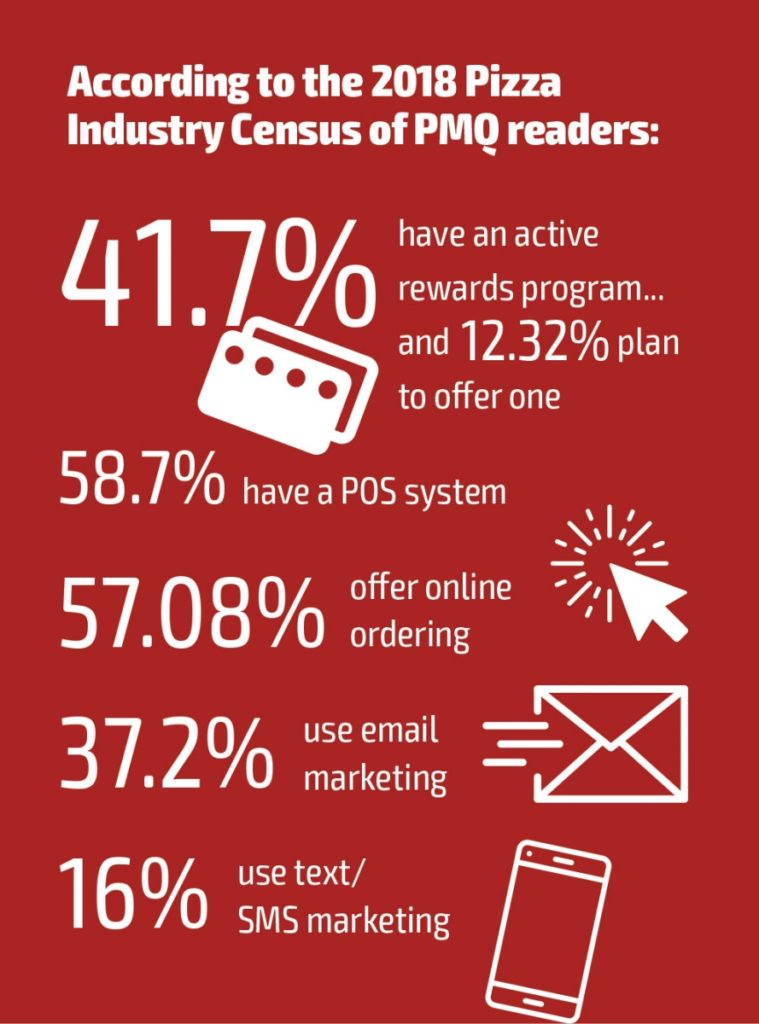 “Rewarding guests for behavior increases the guests’ propensity to choose the brand again in the next purchase cycle,” Tempesta adds. “Next, brands leverage what they know about the guest to drive incremental visits and spend. With guest insights, marketing messages become more relevant and timely, thereby resonating with guests to cause action.”
“Rewarding guests for behavior increases the guests’ propensity to choose the brand again in the next purchase cycle,” Tempesta adds. “Next, brands leverage what they know about the guest to drive incremental visits and spend. With guest insights, marketing messages become more relevant and timely, thereby resonating with guests to cause action.”
A good rewards program offers “a proverbial lever for driving traffic and can target discounts specifically to drive incremental spending,” Tempesta says. “Rewards programs also enable the marketer to limit cannibalized sales. With insights and targeting tools, marketers ensure a higher proportion of full-priced checks.”
And if you’re trying to get away from discounting, Karington points to the psychology behind a rewards program. “Discounts train people to wait for deals, while loyalty encourages people to spend more to earn a reward,” he says.
Consider all of the points of contact you have with your customers. That data, including in-store and online purchases, social media feedback, and more can be fed into a robust loyalty platform that delivers highly targeted messages to each customer. “The number of guest touchpoints will only grow as brands provide more opportunities to order and pay for meals using technologies like mobile and voice assistants, and it’s imperative that all pertinent data is collected regardless of the type of transaction,” Tempesta says. “This helps create a richer guest profile and arms brands with the insights they need to send relevant communication and provide better experiences.”
“The merchant is no longer in charge of their marketing,” Karington adds. “Their customers are. The more a merchant can focus on the customer experience, the better off they’ll be.”
Loyalty Programs By the Numbers
By PMQ research director Blake Harris
Contact Blake at blake@pmq.com if you would like to update any information in this report or add your rewards program to our list.
Over the past six months we’ve gathered information from the top 50 pizza chains and the third-party loyalty program developers they use. We’re happy to report that what we found backs up what the experts have been telling us: The major pizza players are increasingly relying on loyalty programs to attract and retain customers.
Each chain’s program is different in its own way, and some use both loyalty programs and e-clubs while others use e-clubs only. We found a number of consistent categories and trends that you can see in the chart on the opposite page. It is sorted according to the success of the chains’ programs. The number of participants in these programs is not available, but the number of Android app downloads from the Google Play Store is, which provides a reasonably good indirect indicator. This means that programs that don’t currently use a mobile app are listed at the bottom, regardless of how many participants they might have.
The programs are separated into two categories: Loyalty Programs, which include programs that provide rewards based on customer behavior, and E-Clubs, including email, text and receipt programs that provide rewards for just signing up. Not all programs have publicly listed names. Where available, third-party developers for programs and mobile apps have been listed. Each of these third-party companies provide different types of services to support the development of an effective program.



